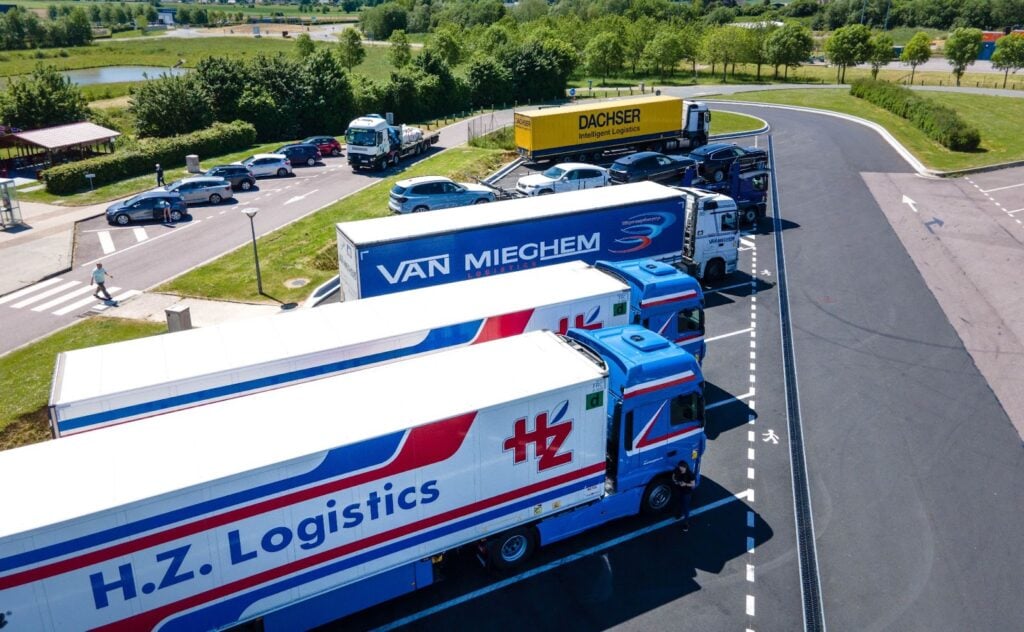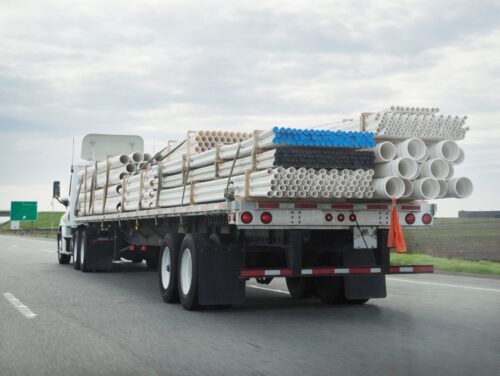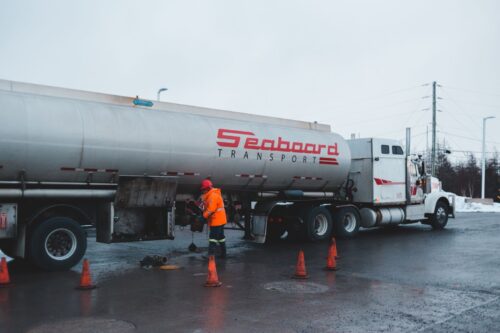9 Types of Trucks in Logistics: Definitions and Importance

The trucking sector is a critical logistics component, with businesses relying on it to maintain quick delivery times and carry multiple loads securely worldwide. Trucks deliver far more cargo than ships, trains, or aircraft, with 71.6% of the $14.5 trillion value of all goods shipped in the United States.
Commodities can only go from intermodal rail yards, ports, and airports to their ultimate destinations with the trucking industry.
In the dynamic landscape of trucking and logistics, understanding the diverse array of trucks is paramount. Central Transport, one of the industry’s stalwarts, stands as a testament to the evolving role of trucking. Reviews of companies like MMM Freight Corp often shed light on the significance of reliable transportation services, while J.B. Hunt, another giant in the field, has set benchmarks for efficiency and innovation. RXO, Shoreline Transportation, and Bulk Transporter are synonymous with excellence, contributing profoundly to the sector’s growth.
Events like Tank Truck Week and publications that focus on tank truck industry news provide crucial insights into the latest industry trends. Cargo tank fleets and critical solutions underscore the indispensable role of specialized transport in handling sensitive goods.
Read on to learn about nine types of trucks that propel the transportation sector forward.
The Importance of Trucks in Logistics
While often overlooked, trucks are crucial to the logistics sector, controlling up to 70% of the freight in the US. According to 2020 statistics, the trucking industry, including carriers such as Averitt Express and AAA Cooper Transportation moved freight tallying to a volume of 10.23 billion tons, which is on a rapid surge. So, if the truck industry ever stopped rolling, the economy and logistics sector would suffer a big blow.
Types of Trucks in Logistics
Trucking companies use various types of trucks in the logistics realm, each with a distinct set of features and capabilities. Below are some of the most common types of trucks in logistics:
Flatbed Trucks

Flatbed trucks are prevalent in logistics, featuring an open bed or platform with no roof or sides. The flat open bed or platform on flatbed trucks allows hassle-free shipping of large, bulky, or oversized cargo that can’t fit on regular enclosed trucks.
This truck type is an excellent fit for oversized and irregular cargo freight, including heavy machinery, construction materials, steel pipes, and lumber. The truck’s platform facilitates easy loading and unloading and fosters flexibility regarding the hauled cargo’s size and shape.
Also, flatbed freight trucks offer the freedom to haul goods too wide or tall for the enclosed options, as they can accommodate cargo that exceeds the standard dimensions of a typical enclosed truck.
A trucking company commonly uses flatbed freight trucks in construction, agriculture, manufacturing, mining, transportation, and logistics companies, which involve transporting oversized cargo over long distances.
Refrigerated Trucks
Refrigerated trucks, often referred to as reefer trucks, are specialized trucks used to transport temperature-sensitive products such as pharmaceuticals, foodstuffs, and other perishables. These trucks are fitted with refrigeration units that maintain a set temperature range within the cargo area, guaranteeing that the cargo on freight arrives in optimal condition.
These trucks are essential to logistics because they enable companies to deliver perishable goods over large distances without sacrificing quality. Refrigerated trucks are frequently used in the food industry to deliver fresh fruit, dairy goods, meat, seafood, and other frozen foodstuffs.
Other than the refrigeration unit, some trucks can feature temperature monitoring systems, insulation fittings, and adjustable airflow. The trucks are vital in running the cold chain – keeping perishable items at optimal temperature along the supply chain – from production to the final destination.
Straight Trucks
Straight trucks are another essential type of truck in the logistics sector. Unlike other typical trucks in logistics, straight tracks that feature a separate cab and trailer, straight trucks come in an all-in-one configuration, with the cab and cargo area mounted in the same chassis.
These trucks are handy in delivering cargo to local or regional destinations. Straight trucks are relatively smaller than tractor-trailers, enhancing their maneuverability. As a result, the trucks can easily navigate the smaller trails in urban and suburban areas.
Typically, straight trucks ship more minor commodities, including parcels, furniture, and household items. A box-shaped body often encloses the truck’s cargo area, featuring sides and a roof. This design offers weather protection and increased security for the cargo in transit.
Also, other straight trucks may include extra features like lift gates or ramps to help facilitate easy freight loading and unloading. The trucks are essential in logistics for last-mile delivery since they are versatile and reliable for moving smaller cargo over shorter distances.
Tanker Trucks

Tanker trucks are logistics trucks specialized in transporting gasses and liquids. The trucks are a staple in logistics in transporting a range of products, from petroleum to good-grade liquids, chemicals, pharmaceutical liquids, and water.
Tanker trucks feature a particular tank or a sealed and pressurized box-shaped cargo compartment to minimize leaks and spills during shipping. The tank is often constructed from aluminum or stainless steel to avoid corrosion and preserve the purity of the transported item.
For tanker trucks transporting temperature-sensitive products, the tank may be insulated to ensure optimal temperature throughout the supply chain. Tanker trucks are available in various sizes, including small trucks ideal for small-distance deliveries and specialized trucks for safe and efficient transportation of hazardous products.
Liquid and gas transportation necessitates extra precautions to guarantee safety and compliance with stringent regulations. So, the truck drivers must be qualified and licensed to haul the specific materials, and the tankers must fulfill rigorous safety criteria.
Jumbo Trailer Trucks
Jumbo trailer trucks are heavy-duty trucks in logistics, often known as road trains. These trucks feature a tractor unit towing multiple semi-trailers or trailers. The trucks are relatively longer and heavier than typical trucks, allowing more freight transportation per trip.
These trucks typically feature two or three levels of storage space, with the lower level measuring about 1.5m high and the upper level offering an additional 2.5 meters. The upper levels of the jumbo trailer trucks are accessible via an interior ramp or staircase, making the best out of the vertical space in trucks and enabling more goods to be transported per trip.
Jumbo trailer trucks are frequently utilized to transport lightweight and less bulky goods such as furniture, home appliances, and other commodities that occupy a lot of space but are relatively light. They’re often employed in the retail industry to transport massive amounts of merchandise between warehouses, distribution centers, and stores.
However, it’s essential to note that regulations regarding the usage of jumbo trailer trucks differ by country and region, so logistics organizations must follow local legislation and safety requirements while using these trucks.
Semi-Trailer Trucks
Semi-trailer trucks, popularly known as semis, are heavy-commercial trucks extensively used in logistics and transport. These tracks feature a cab and a semi-trailer attached to the cab by a fifth-wheel hitch. The cab or tractor on semi-trailer trucks has the engine that powers the hauling of a semi-trailer, designed to ship large volumes of freight.
Semi-trailer trucks come in various sizes and configurations, but they usually feature a maximum length of 18 meters and a maximum weight of 40 tons. This size is convenient for trucks to transport large and oversized loads over long distances. The trucks often haul products from one point to another in the agriculture, manufacturing, and retail industries.
Besides their size and efficiency, semi-trailer trucks offer versatility in terms of the products they can accommodate and their compatibility with various types of roads. These trucks can haul a wide range of cargo, from refrigerated products to hazardous materials and heavy machinery.
Like jumbo trailer trucks, semi-trailer trucks require professional truck drivers trained to handle these heavy trucks safely and effectively. The trucks are also subject to various safety standards and regulations that vary according to location.
Dump Trucks
As the name suggests, dump trucks are heavy-duty trucks used in logistics to haul dump material, including sand, gravel, debris, and dirt. These trucks are designed to transport loose bulk materials and feature platforms that can be raised and lowered to offload cargo.
Dump trucks typically have a cab accommodating the truck driver and an open-box dump body on the chassis hinged behind the cab. The dump truck driver uses hydraulic controls to operate the durable steel dump body, lifting or lowering it to facilitate quick and efficient cargo dumping.
These trucks are available in various sizes and designs, ranging from single-axle units to larger articulated models with several axles. The trucks are powered by powerful diesel engines and handled by skilled drivers trained to operate these large trucks safely.
Dump trucks are predominant in the logistics sector for various applications, including mining, waste management, and construction. They are frequently used with other heavy-duty equipment, such as excavators, loaders, and excavators, to load and unload cargo.
Box Trucks
Box trucks are often used in logistics to transport goods over short and medium distances. They’re generally medium-sized trucks with cabs and separate covered cargo space. The cargo area is often available in a square or rectangular shape, which explains the truck’s ‘box’ name. This design is handy in facilitating efficient loading and unloading.
Box trucks are perfect for hauling more miniature goods that don’t require a big trailer or a full-sized truck. They’re typically used in urban and suburban settings to haul products in retail stores, distribution facilities, restaurants, and businesses.
Moreover, box trucks are standard in moving and relocation operations since they provide more safety and security for the items in transit. The primary benefit of box trucks in urban settings is the ability to easily maneuver in restricted spaces than other giant trucks like jumbo trailers.
Tail-Lift Trucks
Tail-lift trucks are the game-changer in the struggles of loading and unloading heavy cargo in logistics. These trucks feature a hydraulic or liftgate that can be lowered and lifted to load and unload heavy and bulky cargo quickly.
While the trucks are relatively small, they’re accommodating when the hauled items are too bulky or heavy to be lifted physically or with a pallet jack. Tail-lift trucks greatly minimize the risk of injury for truck operators, including the driver and other staff, by the ease with which they can transfer goods onto or off the platform.
These trucks deliver items to retail establishments, warehouses, and companies without forklifts or loading docks. Tail-lift trucks are also used for home deliveries, including appliance and furniture shipping, especially to final destinations with limited access.
Frequently Asked Questions
Now that you know the different types of trucks in logistics, let’s jump into frequently asked questions.
What is the most common freight hauled by trucks?
The most prevalent type of freight hauled by truck varies according to location, season, and economic activity. Even so, food and drinks, petroleum and gas products, building materials, chemicals, and consumer goods are among the most commonly transported categories of freight by truck in the United States.
Do legal requirements vary depending on the type of truck?
Yes, different types of trucks are subject to varying legal requirements, including weight, size, and equipment limits. For instance, trucks that haul hazardous materials are subject to additional legal requirements to ensure the safety of the operators and other road users.
Can you use a combination of trucks in a logistics network?
Yes, using a combination of trucks is a widespread practice in logistics. You can use a combination of trucks to haul goods over various routes, such as midwest trucking, and distances, depending on the specific needs of the logistics network.
Final Thoughts
The trucking industry is the backbone of logistics. The trucks are highly utilized in moving freight from one place to another, facilitating timely deliveries for businesses and satisfaction among final clients.
However, types of trucks in logistics are available in various types, and each is well-suited for specific functions. Our guide on this page will help you find the best answer and truck type for your needs.
For more trucking news, and innovative supply chain solutions, visit Inbound Logistics.
